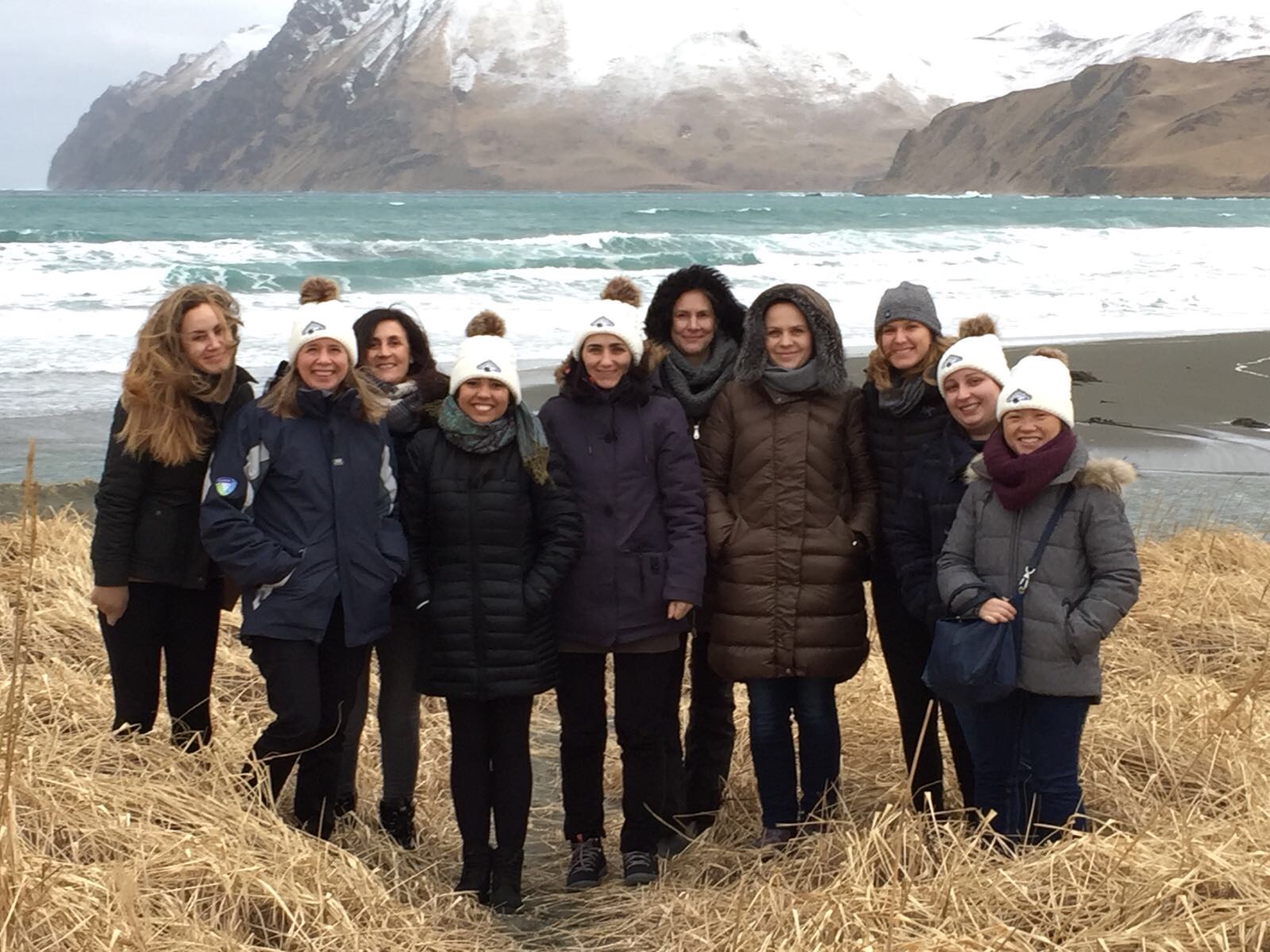The nation’s top fishing port welcomed seven European seafood buyers in late January and showed off its massive seafood industry during peak operations at Dutch Harbor.
The buyers — all women — hailed from France, Germany, Lithuania, Portugal, Spain and the U.K. Their companies import more than $60 million in U.S. seafood sales, said Hannah Lindoff, international program director for the Alaska Seafood Marketing Institute, which hosted the trip.
“They are interested in Alaska pollock, cod, surimi, octopus, salmon, roe, blackcod and king crab,” she explained.
“The whole point was to show off Alaska and build relationships between these buyers and the seafood industry,” echoed Alice Ottoson-McKeen, the assistant program coordinator who made the trek to Dutch Harbor with the group.
“ASMI often does trade missions, but this trip was really special because it was all women buyers, and they could talk to one another about their shared experiences,” she said, adding that the trip was inspired by an inaugural women in seafood leadership summit last summer by Intrafish Media.
The women spent four days in Dutch at the busiest time of year when Alaska pollock, cod, crab and flatfish seasons are in full swing.
“They didn’t realize how far away and remote it is. They were in awe of the landscape with no trees and all of the mountains and islands surrounding you,” said Ottoson-McKeen. “It’s obviously unlike anywhere else in the world.”
The group experienced fish processing action on a massive scale at the Unisea and Westward processing plants, which handle much of the nearly 800 million pounds of seafood that crosses the docks each year.
“They were really impressed with the size and scope of the operations and the degree of automation,” said mayor Frank Kelty who also showed off Dutch Harbor’s cold storages, warehouses, containerships from around the world, and the small town itself.
“It was a real eye opener for them to see our world-class facilities and the 24/7 activity in a bustling town of 4,500 people. They were a little amazed and frustrated with our spotty internet and cell phone connectivity. Welcome to our world!” Kelty added with a laugh.
A highlight was time spent aboard fishing boats, including one 300-foot-plus catcher-processor.
“There was so much pride from the captains and crews in their jobs and their boats, and that was something the women were really impressed with. They could see that the people working in this industry really love it,” said Ottoson-McKeen. “Even getting stuck for an extra day was nice because we were able to meet up and have dinner with some of the crew we’d met, and talk in a more informal setting. That really added to the depth of understanding of our seafood industry.”
Ultimately, the goal of the trip was to enlighten the buyers about Alaska seafood, and to entice them to buy more or try new products.
“A lot of them already are buying Alaska seafood, but they saw firsthand how our industry cares about quality and sustainability and the environment,” she added.
“They all are knowledgeable buyers, but seeing it at the source means so much more,” said Pat Shanahan, program director for the trade group Genuine Alaska Pollock Producers, who acted as a tour guide. “They got to see what they’ve been hearing about for years. Now they will be able to connect the story to the Alaska brand.”
“We definitely felt like we created some wonderful Alaska seafood ambassadors,” added ASMI’s Ottoson-McKeen.







